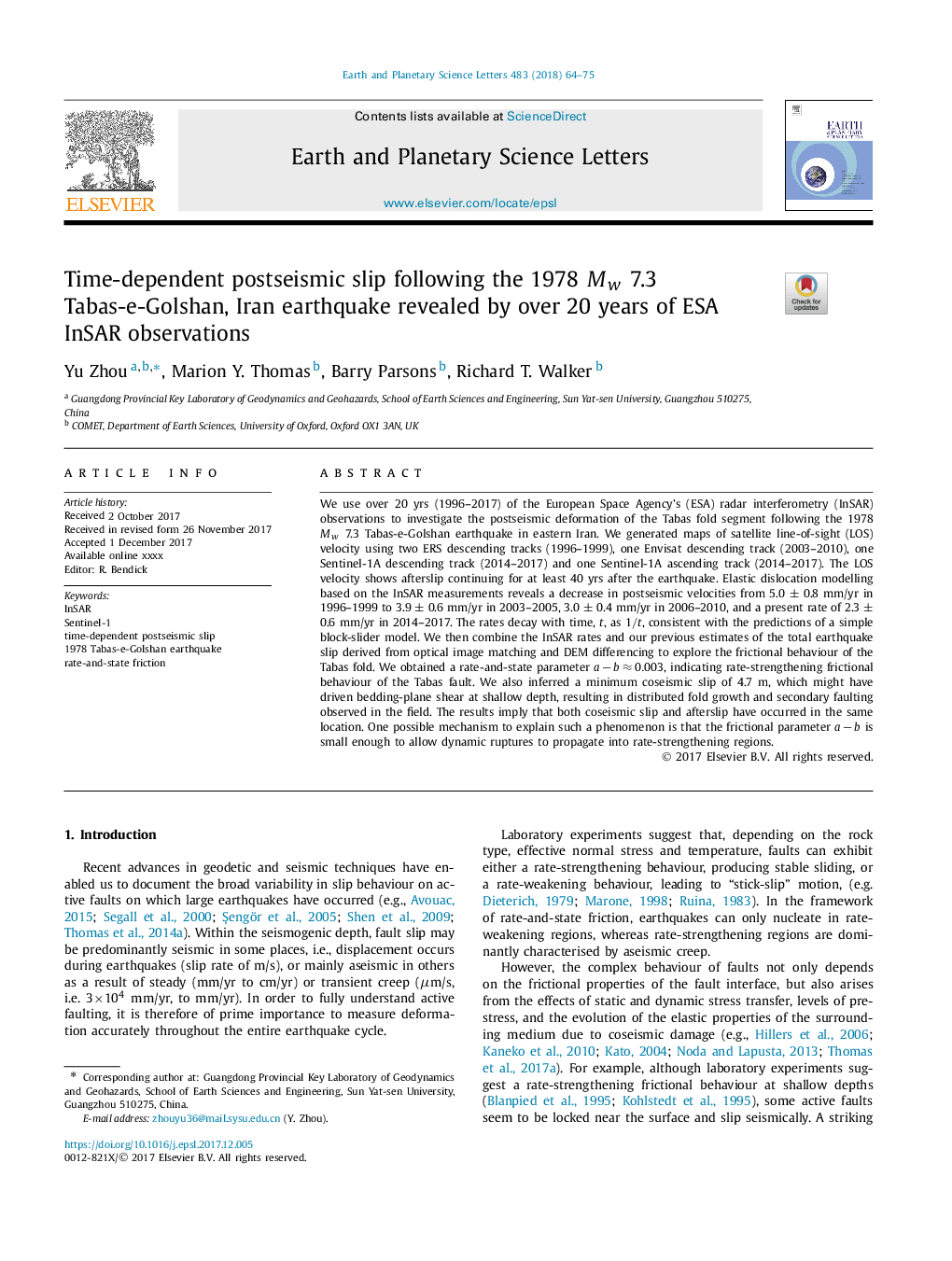| کد مقاله | کد نشریه | سال انتشار | مقاله انگلیسی | نسخه تمام متن |
|---|---|---|---|---|
| 8907194 | 1634673 | 2018 | 12 صفحه PDF | دانلود رایگان |
عنوان انگلیسی مقاله ISI
Time-dependent postseismic slip following the 1978 Mw 7.3 Tabas-e-Golshan, Iran earthquake revealed by over 20 years of ESA InSAR observations
دانلود مقاله + سفارش ترجمه
دانلود مقاله ISI انگلیسی
رایگان برای ایرانیان
موضوعات مرتبط
مهندسی و علوم پایه
علوم زمین و سیارات
علوم زمین و سیاره ای (عمومی)
پیش نمایش صفحه اول مقاله

چکیده انگلیسی
We use over 20 yrs (1996-2017) of the European Space Agency's (ESA) radar interferometry (InSAR) observations to investigate the postseismic deformation of the Tabas fold segment following the 1978 Mw 7.3 Tabas-e-Golshan earthquake in eastern Iran. We generated maps of satellite line-of-sight (LOS) velocity using two ERS descending tracks (1996-1999), one Envisat descending track (2003-2010), one Sentinel-1A descending track (2014-2017) and one Sentinel-1A ascending track (2014-2017). The LOS velocity shows afterslip continuing for at least 40 yrs after the earthquake. Elastic dislocation modelling based on the InSAR measurements reveals a decrease in postseismic velocities from 5.0 ± 0.8 mm/yr in 1996-1999 to 3.9 ± 0.6 mm/yr in 2003-2005, 3.0 ± 0.4 mm/yr in 2006-2010, and a present rate of 2.3 ± 0.6 mm/yr in 2014-2017. The rates decay with time, t, as 1/t, consistent with the predictions of a simple block-slider model. We then combine the InSAR rates and our previous estimates of the total earthquake slip derived from optical image matching and DEM differencing to explore the frictional behaviour of the Tabas fold. We obtained a rate-and-state parameter aâbâ0.003, indicating rate-strengthening frictional behaviour of the Tabas fault. We also inferred a minimum coseismic slip of 4.7 m, which might have driven bedding-plane shear at shallow depth, resulting in distributed fold growth and secondary faulting observed in the field. The results imply that both coseismic slip and afterslip have occurred in the same location. One possible mechanism to explain such a phenomenon is that the frictional parameter aâb is small enough to allow dynamic ruptures to propagate into rate-strengthening regions.
ناشر
Database: Elsevier - ScienceDirect (ساینس دایرکت)
Journal: Earth and Planetary Science Letters - Volume 483, 1 February 2018, Pages 64-75
Journal: Earth and Planetary Science Letters - Volume 483, 1 February 2018, Pages 64-75
نویسندگان
Yu Zhou, Marion Y. Thomas, Barry Parsons, Richard T. Walker,